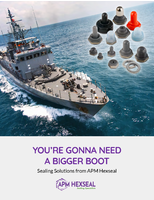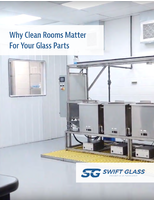ASTM Sealant Standard tests new products for weather exposure.
Press Release Summary:
ASTM C1735, Test Method for Measuring the Time Dependent Modulus of Sealants Using Stress Relaxation, will help sealant manufacturers to evaluate new products and changes to said products due to weather exposure. According to NIST research chemist and C24 member Christopher White Ph.D., this standard quantifies properties of interest that can be used to follow changes in sealant and may result in early detection and correction of problems."
Original Press Release:
New ASTM Sealant Standard Tests New Products for Weather Exposure
W. CONSHOHOCKEN, Pa.-Sealant manufacturers will use a new ASTM International standard to evaluate new products and changes to these products due to exposure to weather. The new standard, ASTM C1735, Test Method for Measuring the Time Dependent Modulus of Sealants Using Stress Relaxation, is under the jurisdiction of Subcommittee C24.20 on General Test Methods, part of ASTM International Committee C24 on Building Seals and Sealants.
"Sealant is such an attractive and useful material for separating the inside from the outside in the building envelope because of its unique attributes such as elasticity, adhesion and barrier properties," says Christopher White, Ph.D., research chemist, National Institute of Standards and Technology, and a C24 member. "Changes to these properties indicate changes to the molecular structure that often precede failure. This standard, using commonly available laboratory equipment, allows manufacturers to directly measure the properties that are of real interest."
White notes that new sealant is often firm, soft and pliable and can be stretched without breaking while old sealant can be hard, cracked, brittle and sometimes almost like liquid.
"ASTM C1735 quantifies the properties of interest that can be used to follow those changes in the sealant, resulting in early detection and correction of problems to sealant properties," says White. "Previous to this standard, you had to rely on visual inspection of the sealant."
To purchase ASTM standards, visit www.astm.org and search by the standard designation number, or contact ASTM Customer Relations (phone: 610-832-9585; service@astm.org). ASTM International welcomes and encourages participation in the development of its standards. For more information on becoming an ASTM member, visit www.astm.org/JOIN.
ASTM International is one of the largest international standards development and delivery systems in the world. ASTM International meets the World Trade Organization (WTO) principles for the development of international standards: coherence, consensus, development dimension, effectiveness, impartiality, openness, relevance and transparency. ASTM standards are accepted and used in research and development, product testing, quality systems and commercial transactions.
View this release on the ASTM Web site at www.astmnewsroom.org.
ASTM Committee C24 Next Meeting: Jan. 8-10, 2012, Ft. Lauderdale, Fla. Technical Contact: Christopher C. White, Ph.D., National Institute of Standards and Technology, Gaithersburg, Md., Phone: 301-975-6016; christopher.white@nist.gov
ASTM Staff Contact: Stephen Mawn, Phone: 610-832-9726; smawn@astm.org
ASTM PR Contact: Barbara Schindler, Phone: 610-832-9603; bschindl@astm.org




